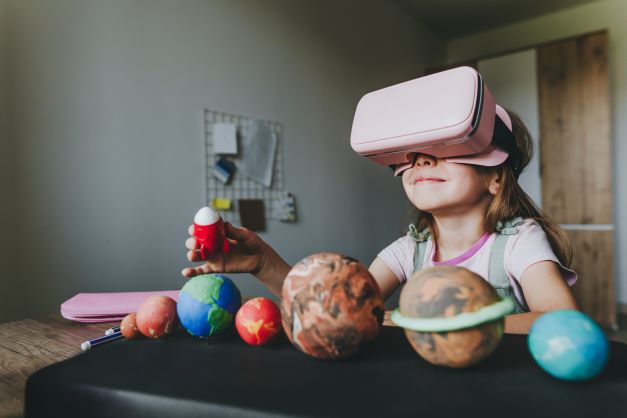Four Tips for Supporting a Successful Student During the Holidays

This will be our second to last post in our ‘Successful Students’ series. There are five previous posts in this series which provide a variety of tips and ideas for parents and caregivers to develop successful students. In this article, we will be exploring four tips to help you as a parent or guardian support your little student during the busy holiday season. Regardless of where you are located in the world and which holidays your family celebrates, the end of the year can be filled with lots of excitement. Often times this excitement can lead to a sense of overwhelm in small children. Even as adults we often experience feelings of chaos and out of control with holiday parties, travel schedules, and busy day to day obligations. As adults we are responsible for providing a sense of calm and routine to our households. If we are feeling overwhelmed by our busy holiday schedules, it will inevitably trickle down to our little ones. The goal of this post is to provide you with ideas to hel...
Live Group Sessions Contribute to Successful Students

We are continuing with our “Successful Students” blog series. Previous posts in this series include “Tips for Raising a Successful Student”, “Capable Children are Happy Children Who Turn Into Successful Students”, “Back to School Tips for the Homeschooling Parent to Raise a Successful Student”, and “Using the Environment to Develop a Successful Student”.
In this post we will be digging deep into the live group sessions offered by Masterminds Early Learning. We will share basic information about these sessions as well as review benefits to students participating in them, material covered, as well as why we offer these sessions at all.
About the Live Group Sessions

Live group sessions twice per week contribute to creating successful students.
The live group sessions at Masterminds Early Learning come in a package of two live sessions per week that are twenty minutes each. During this time, students will be instructed by a Masterminds Instructor. Our live group sessions do not cover...
Using the Environment to Develop a Successful Student

In this post, we are continuing our “Successful Student” series. Previous posts in this series include “Tips for Raising a Successful Student”, “Capable Children are Happy Children Who Turn Into Successful Students”, and “Back to School Tips for the Homeschooling Parent to Raise a Successful Student”. In this post, we will be discussing ways to use a child’s learning environment- ideally their outdoor environment- to help develop a successful student. Below are five steps for part time and full time homeschooling parents.
The Masterminds Early Learning online curriculum uses technology to teach. While it is important for children to learn through technology as it is such an integral part of our lives these days, it is also important for children to learn through and explore the world around them. As valuable as screens are for learning so is nature and all it has to offer. According to the Child Mind Institute “Many researchers agree that kids who play outside are happier, better at p...
Back to School Tips for the Homeschooling Parent to Raise a Successful Student

This is our third post in our “Successful Student” series. In the first post of the series titled “Four Tips for Raising Successful Students”, we offer four specific tips that parents can utilize to help develop their little students into lifelong successful learners. In our second post titled “Capable Children are Happy Children Who Turn Into Successful Students”, we discuss how our Masterminds Early Learning program was founded and came to be after one of our founders, Ms. Tania Siddiqi, began using a similar program with her daughter at the age of two. In this post, we will explore back to school tips for homeschoooling parents to help them increase their odds for a successful school year.
Ahh, Summer of 2022. Finally, families and friends were able to travel and gather in a way that hadn’t happened for years. As the end of summer draws near, it’s time to start thinking about the upcoming school year. Whether your child is headed back to school tomorrow, next week, or next month, i...
Capable Children are Happy Children who Turn into Successful Students

The combination of enhanced comprehension, tremendous curiosity, and a love of learning triggers a virtuous cycle that supports success and happiness throughout life
“When I first witness a group of amazing, happy, and kind 3, 4, and 5 year olds, all of whom could read, do math, talk about the great artists of the world, speak three languages, play the violin, do gymnastics and have a love of learning that I had never seen before, I knew that I had found something extraordinary,” says Tania Siddiqi, Co-Founder and Curriculum Director of Masterminds Early Learning.
But many questions continued to linger in my mind. Can young children really learn all this? Should they be learning this at such a young age? Are they happy or does this take away from their childhood? Perhaps the most important overarching question was: Why does my child really need all this?
It would take many years for me to find a conclusive answer to this question. During this time, I feel that I went through three s...
Four Tips for Raising a Successful Student

This is the first post in a new series we are releasing named “Successful Student” series. Throughout this series, we will be exploring different tips, tricks, and tactics to help you develop a successful student. Here at Masterminds Early Learning, we believe that a successful student is one that strives to be their best self and has a thirst for knowledge. In this article, we will be exploring four tips for parents to help develop a successful student.
As a parent, you have a lot of responsibility. One of them is to ensure that your child is getting the best education and training possible. What you do as a parent has a huge impact on your child’s success. One of the responsibilities you have as a parent is to help your child develop good study habits. Raising a successful student takes time, patience, and hard work. But the payoff is well worth it—your child will be on the right track for college and will have a better chance of success in his or her future career. In this article ...
Is Part-Time Homeschooling Right For You?

It’s all we hear about lately- inflation and the ever-increasing cost of goods and food. Everything seems to be more expensive than ever before. In some cases, this is translating to stay-at-home parents finding themselves going back to work. When this happens, many parents and caregivers feel they need to give up the dream of homeschooling their child. What if I told you that you didn’t have to kiss the dream good-bye just yet? That it is possible to be a working parent and a part-time homeschooling parent. Would you believe me?

Part time homeschooling can be a great compromise for working parents looking to incorporate home learning.
What is part time homeschooling and what can it provide?
As stated in an article on PBS.org, part-time homeschooling or partial homeschooling as it is sometimes called, means that parents may opt to teach just one subject at home or teach the core subjects at home such as Math and Reading and send their child to a physical school for other subject s...
Teaching Toddlers Science, Yoga, Creative Art, and Music Using a Homeschooling Curriculum

In previous posts in our ‘Teaching Toddles’ series, we explored the benefits of teaching toddlers and how to teach toddlers Math and Critical Thinking Skills, Reading and Encyclopedic Knowledge, and a Second Language such as French. Today we will conclude our series and explore the remaining subjects offered through Masterminds Early Learning on-demand curriculum- Science, Yoga/Physical Education/Gymnastics or Movement, Creative Art, and Music and Suzuki Violin. Each of these subjects offers unique opportunities for your toddler to master skills that will benefit them throughout their life.
Benefits of Teaching Toddlers Science

Introducing toddlers to science from a young age can help them grow a lifelong interest in it.
Teaching toddlers science using an at home curriculum can be an effective way to introduce young learners to scientific concepts. Preparing food and cooking experiments can also be fun and educational for young children. This approach has the potential to build in...
Teaching Toddlers a Second Language Using an At Home Curriculum

We are continuing our Teaching Toddlers series by discussing how to teach your toddler a second language. In previous posts in the series, we explored teaching toddler math and critical thinking skills and teaching toddlers to read.
Global Language Statistics
If you’re an American, this might seem like a shocking statistic- Did you know that 43% of the world’s population is bilingual? That translates to nearly half of the world can speak two languages equally well. Only 40% of the world is monolingual- or can only speak one language. 1 An article in the Washington Post states that only 20% of Americans are bilingual versus 56% of Europeans.2 As American parents, how can we do better to increase these statistics and include our children in the bilingual percentage?
Most parents are eager to help their children learn a second language but find themselves stymied by their young children’s unresponsive ears and slow comprehension. The good news is that with a little effort, it is possi...
Teaching Toddlers How to Read Using an At Home Curriculum

We are continuing our Teaching Toddlers series by reviewing how to teach toddlers to read. In case you missed it, in the first two posts of this series we discussed teaching toddles math and critical thinking skills using an at home curriculum. We covered teaching a variety of early math concepts such a quantities, numerals, patterns, measurement and more.
In this article we will cover not only how to teach toddlers to read but also the importance of doing so from an early age. Did you know that only 35% of US fourth graders are reading at or above grade level? This means that 65% of US fourth graders are “below proficient” which means they are not reading at grade level. Even more worrisome is that 14%- a jaw dropping 32 million adults- in the United States cannot read. 1. One of our goals at Masterminds Early Learning is maximize the potential of every child and help them be them be their most intelligent and happiest selves.
Benefits of Reading to your Baby

Reading to you baby...

